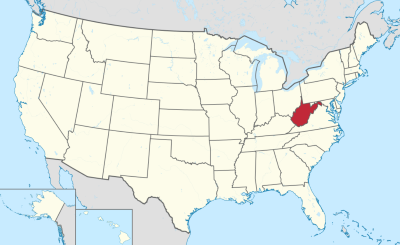Here you’ll find the largest list with West Virginia hosting reviews. We’ve listed all West Virginia web hosting providers with our UNCENSORED review and that of users.

Quick Facts
Internet Speed: 27.3 Mbps downlink; 3.9 Mbps uplink
Population: 1.84 million
Internet Coverage: 85% of residents
Main Internet Services: Cable, DSL, Fiber
Main Internet Service Providers: SuddenLink, Frontier, LUMOS Networks
Colocation Datacenters: 3
Internet in West Virginia
According to Akamai.com, the average Internet downlink speed in West Virginia is 27.3 Mbps and the average uplink speed is 3.9 Mbps.
In 2016, the population of West Virginia was 1.84 million. Over 85% of residents have access to the Internet, especially broadband connections.
Main Internet Services provided in West Virginia are as follows:
– Cable – over 90% coverage
– DSL – over 85% coverage
– Fiber – less than 15% coverage
Main Internet Service Providers located in West Virginia are the following:
– SuddenLink (Cable) – 90% availability
– Frontier (DSL) – 85% availability
– LUMOS Networks (Fiber) – less than 10% availability
Gigabit Internet in West Virginia
West Virginia-based ISPs do not currently provide gigabit Internet services to neither business customers, nor residential customers. This is in part the result of the outdated Internet infrastructure that has not seen significant improvements in many years, but also the direct consequence of regional and property-based legal monopolies. Rolling out the necessary infrastructure to support gigabit Internet speeds would require extensive excavation work, whose costs would be supported entirely by Internet Service Providers. As such, it is not very clear when customers will enjoy high-speed Internet services, if at all.
Colocation Datacenters in West Virginia
According to datacentermap.com, there are currently 3 colocation datacenters located in West Virginia. The respective companies are located in Berkeley Springs, Martinsburg, and Petersburg.
Colocation Providers & Datacenters – Berkeley Springs
The Berkeley Springs area is covered by Reliable Hosting Services, whose main datacenter specializes in providing wholesale and retail colocation services, in addition to diverse backup solutions. This facility is sought after primarily by customers looking for a solid presence in the northern part of West Virginia.
Martinsburg Datacenters
The Martinsburg area is covered by DC Corp, whose main carrier-neutral datacenter provides wholesale and retail colocation services, in addition to disaster recovery services, secure hosting, and business continuity solutions in the Eastern Panhandle of West Virginia. Their main clients are governmental and education institutions, which are attracted by the datacenter’s unconditioned access to dark fiber and Internet2.
Petersburg Datacenters
The Petersburg area is covered by Back Up Recovery Corporation. Their main datacenter specializes in providing disaster recovery and business continuity solutions.
Colocation Industry in West Virginia
West Virginia has not been traditionally known as a prominent colocation market, but recent investments made by national providers such as DC Corp or Backup Recovery Corp. might be able to put a spotlight on this state.
In spite of its outdated Internet infrastructure, relatively hot year-round weather, and poor investments, the state does benefit from a series of considerable advantages.
Advantages
West Virginia is located in close proximity to other top or emerging markets, such as Maryland, New Jersey, New York, as well as Virginia. Customers are attracted to this market because of the low costs for electricity, which also reflect in the price for leasing space. According to a report published by 451 research, customers opting for colocation services in West Virginia can save up to 40% on electricity over surrounding states, especially Virginia and New York.
Other cited reasons are centered around the low risk for natural disasters, the cost of living which is 5.4% below the national average, and the workforce turnover rates among the lowest in the entire country.
Current Trends
Regardless, current trends indicate that the local market will not experience much growth in the coming years, primarily reflected by the poor investments, and therefore we should not expect it to make the transition from an undeserved market to an emerging market for the foreseeable future.

